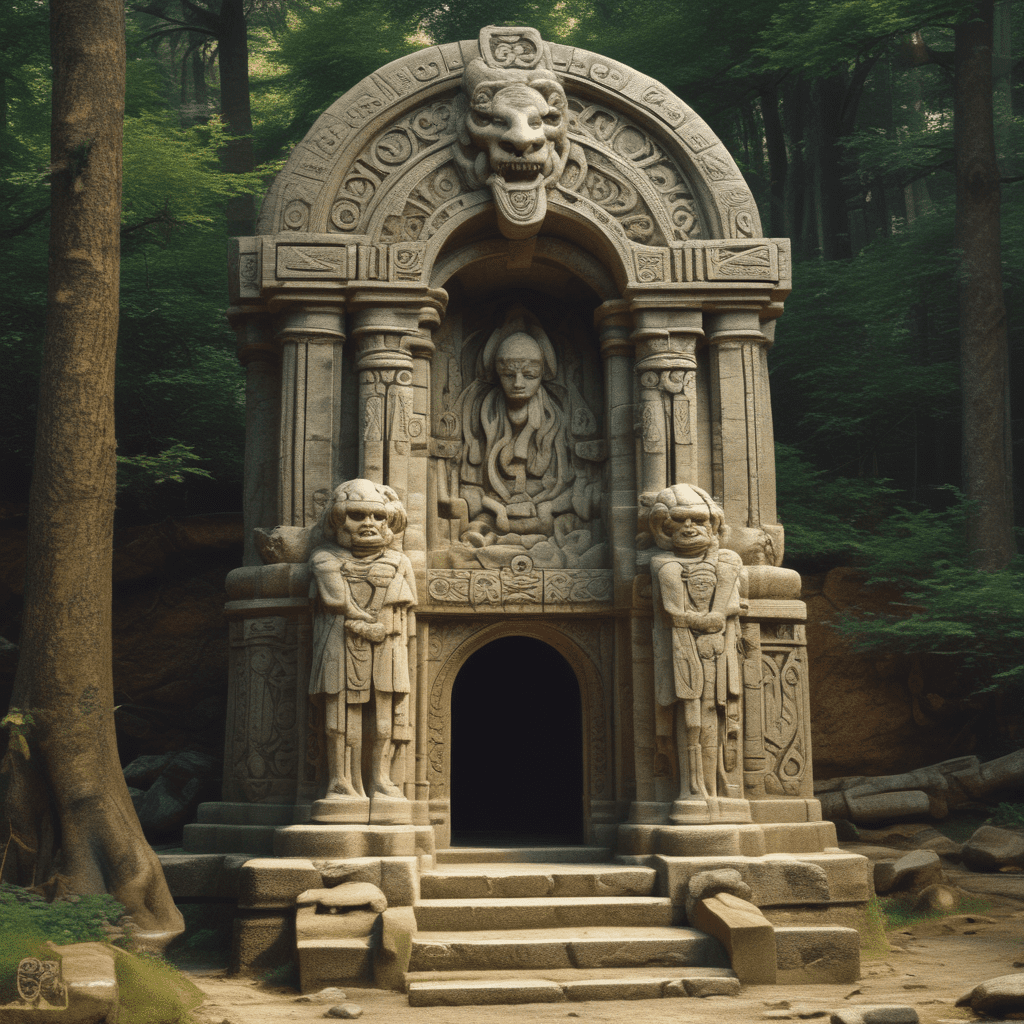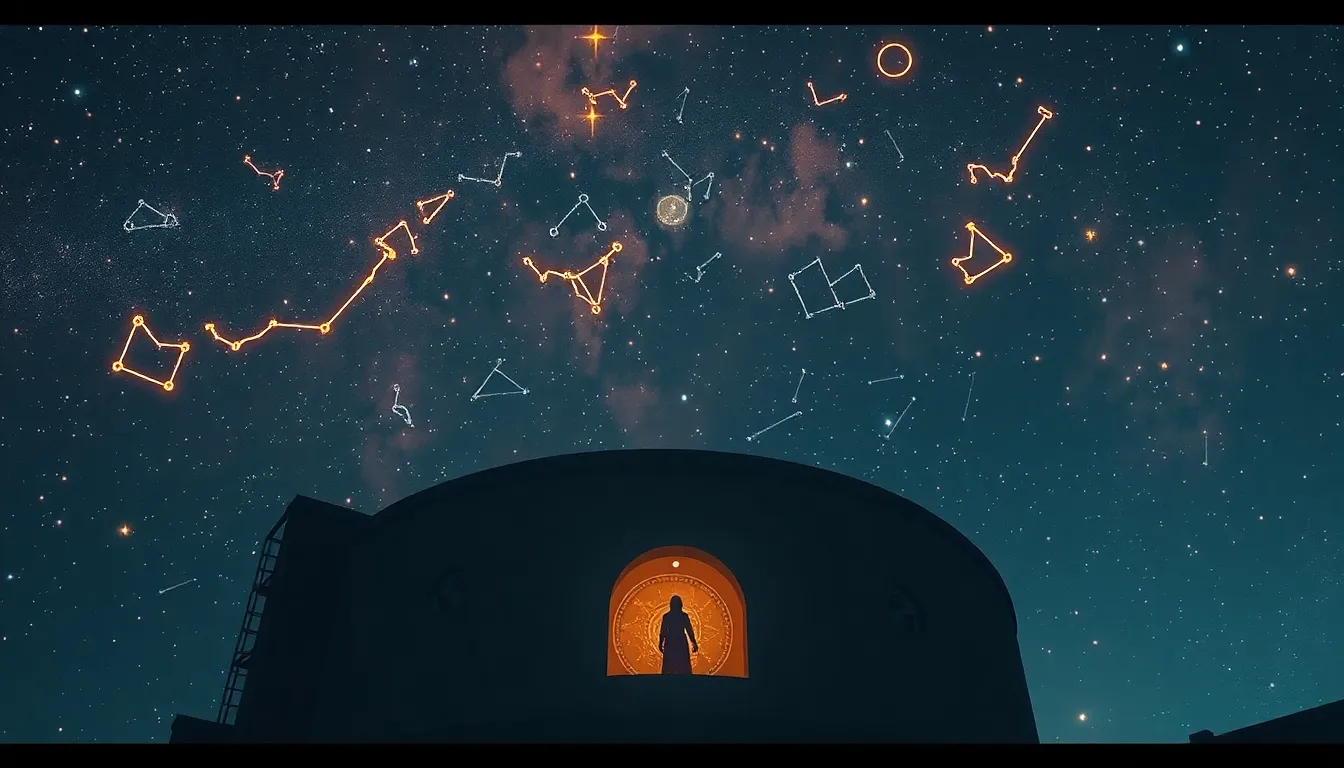The Mountain of the Night Sky: Myths of Celestial Wonders
Introduction: The Allure of the Night Sky
Since the dawn of humanity, the night sky has captivated our hearts and minds. The twinkling stars, the luminous moon, and the vast expanse of darkness have inspired awe and wonder across cultures and generations. This fascination has led to the creation of countless myths and legends, shaping our understanding of celestial bodies and their significance in our lives. From ancient stories of gods and heroes to modern interpretations of cosmic phenomena, the night sky serves as a canvas upon which humanity has painted its deepest fears, hopes, and curiosities.
The Mountain of the Night Sky: A Symbolic Interpretation
The phrase “Mountain of the Night Sky” evokes images of towering peaks that reach into the cosmos. In various cultural contexts, this concept symbolizes the connection between the earthly realm and the celestial. Mountains often represent stability, strength, and a bridge between heaven and earth. In many mythologies, mountains are places where gods reside or where significant celestial events occur.
For instance, in Hindu mythology, Mount Meru is considered the center of the universe and the abode of the gods, symbolizing the connection between the terrestrial and the divine. Similarly, in Greek mythology, Mount Olympus is seen as the home of the gods, where they oversee human affairs.
Ancient Civilizations and Their Celestial Myths
Throughout history, ancient civilizations have gazed at the night sky, interpreting celestial bodies through their cultural lenses. The Egyptians, Greeks, and Mayans all had profound connections with the stars, each having unique myths related to the constellations and celestial events.
- Egyptians: The Egyptians associated the stars with their deities. For example, the goddess Nut was depicted as a starry sky arched above the earth, giving birth to the sun and moon.
- Greeks: Greek mythology is rich with stories of constellations. The story of Orion, the great hunter, and his tragic fate is just one example of how celestial bodies were intertwined with human narratives.
- Mayans: The Mayans were skilled astronomers who used celestial movements to guide their agricultural practices. Their myths often revolved around the cycles of the moon and planets, emphasizing the importance of celestial events in their daily lives.
Constellations as Mythical Narratives
Constellations serve not only as navigational aids but also as vessels of ancient stories. Each constellation carries with it a narrative that reflects the values, fears, and aspirations of the cultures that named them. For example:
- Andromeda: The story of Andromeda, the princess who was chained to a rock as a sacrifice to a sea monster, embodies themes of bravery and redemption.
- Ursa Major: The Great Bear has various interpretations across cultures, often associated with transformation and guidance.
- Scorpius: The scorpion, representing danger and fear, has origins linked to the myth of Orion, illustrating the intricate relationship between constellations.
Through these narratives, storytelling has been crucial in the formation and preservation of myths, allowing cultures to pass down their cosmic heritage through generations.
The Influence of Astronomy on Mythology
The relationship between astronomy and mythology is profound. Early astronomical observations often influenced the creation of mythological stories. Celestial events such as eclipses, comets, and meteor showers were imbued with meaning and interpreted as omens or messages from the gods. Some notable examples include:
- Solar Eclipses: Many cultures viewed solar eclipses as significant events, often believing they signified the anger of the gods or a warning of impending doom.
- Comets: Comets were often seen as harbingers of change. The appearance of Halley’s Comet, for instance, was interpreted by many cultures as an omen of great events, including the rise or fall of kings.
- Meteor Showers: Meteor showers have been celebrated in various cultures, often associated with spiritual cleansing or the visit of ancestral spirits.
The Mountain of the Night Sky in Indigenous Cultures
Indigenous cultures around the world have their own unique interpretations of the night sky. For many, the stars are not just distant objects but relatives and guides, deeply intertwined with their identity and culture. Key insights include:
- Celestial Navigation: Indigenous peoples, such as the Polynesians, used the stars for navigation, relying on their knowledge of celestial patterns to traverse vast oceans.
- Storytelling Traditions: Many indigenous cultures incorporate the night sky into their storytelling, using constellations to convey moral lessons, historical events, or natural phenomena.
- Connection to Nature: The night sky is often viewed as a reflection of the earth, with stars representing ancestors or important animals, emphasizing the interconnectedness of all life.
Celestial Wonders and Their Symbolism Across Cultures
Various celestial phenomena have captured human imagination and been attributed with symbolic meanings in different cultures. Some significant events include:
- Comets: Often seen as omens, comets can symbolize transformation, change, or divine intervention.
- Eclipses: Eclipses can represent the struggle between light and darkness, often interpreted as a time for reflection and change.
- Meteor Showers: Frequently associated with wishes and dreams, meteor showers symbolize hope and the fleeting nature of life.
Modern Interpretations of Celestial Myths
In today’s world, ancient myths of the night sky continue to resonate, albeit in different forms. Contemporary society often blends myth with science, as technology allows us to explore the cosmos like never before. The advent of telescopes and space exploration has reshaped our understanding, yet the stories remain vital, serving as a bridge between our past and present.
Modern interpretations can be seen in:
- Literature and Film: Many contemporary works draw upon celestial myths, weaving them into narratives that explore human experiences.
- Art and Music: Artists often find inspiration in the night sky, creating pieces that reflect both the beauty of the cosmos and the stories it holds.
- Science Communication: Astronomers and educators use myths to engage the public, making complex scientific concepts more relatable.
The Psychological Impact of Celestial Myths
The myths of the night sky have a profound impact on human emotions and behaviors. The sense of wonder inspired by celestial phenomena can lead to:
- Awe and Inspiration: Gazing at the stars can evoke feelings of awe, reminding us of our place in the universe.
- Curiosity: The mysteries of the night sky ignite curiosity, encouraging exploration and scientific inquiry.
- Mental Well-Being: Studies have shown that spending time in nature, including stargazing, can improve mental health and overall well-being.
Conclusion: The Everlasting Legacy of Celestial Myths
As we reflect on the myths of the night sky, it becomes clear that they hold enduring significance in our lives. They not only provide insights into our ancestors’ beliefs and values but also inspire wonder and curiosity in future generations. Preserving these myths is essential as they connect us to our past while guiding us toward a future filled with exploration and discovery. The night sky remains a source of inspiration, reminding us of the beauty and mystery that lies beyond our world.




